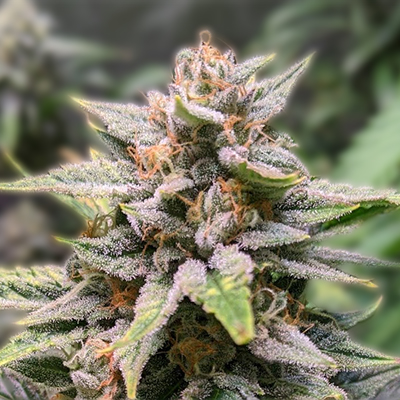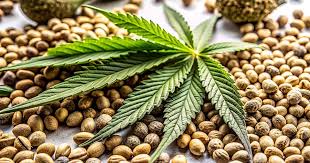
Marijuana Seeds Virginia: Your Complete Guide
As cannabis legalization sweeps across the United States, Virginia has emerged as a notable player in the marijuana landscape. With a growing number of enthusiasts and cultivators, understanding the nuances related to marijuana seeds virginia https://kindseed.com/usa/marijuana-seeds-virginia/ is essential for both new and experienced growers. This article delves into the essentials of cannabis cultivation in this state, exploring legal frameworks, seed selection, cultivation techniques, and more.
Legal Overview of Marijuana in Virginia
Virginia made significant strides toward cannabis legalization in 2021 when the General Assembly passed legislation allowing adults 21 and older to possess and cultivate marijuana. However, there are still important regulations to consider when it comes to marijuana seeds and cultivation. Though adults can grow up to four plants per household, they must ensure that these plants are not visible from public spaces and that they are tended responsibly. Understanding local ordinances in your area is critical to remaining compliant with the law.
Choosing the Right Marijuana Seeds
One of the most crucial steps in cultivating cannabis is selecting the right seeds. The genetic makeup of the seeds significantly influences the quality and yield of the plants. In Virginia, cultivators have access to a variety of seed strains, each offering different flavors, effects, and growth requirements.
Indica vs. Sativa vs. Hybrid
When selecting marijuana seeds, you’ll often come across three main categories: Indica, Sativa, and Hybrid. Indicas are known for their relaxing effects, making them popular among users seeking relief from stress or insomnia. Sativas, on the other hand, tend to provide uplifting and energizing effects, ideal for daytime use. Hybrid strains offer a mix of both, allowing growers to tailor their experience according to the desired effects.
Feminized Seeds
For those looking to maximize their yields, feminized seeds are a great option. These seeds are bred to produce female plants exclusively, which are the ones that produce the buds used for consumption. In Virginia, where outdoor cultivation is increasingly common, feminized seeds can help ensure a successful harvest.
Seed Banks and Sources
When sourcing marijuana seeds in Virginia, it’s essential to choose reputable seed banks. Online retailers often offer a vast selection of strains, detailed descriptions, and customer reviews. Be sure to check for any guarantees or return policies, as this can be a testament to the quality of the products being offered.
Starting Your Grow Operation
Once you’ve selected your seeds, it’s time to start the growing process. Whether you’re cultivating indoors or outdoors, understanding the requirements for each method is key to success.
Indoor Cultivation
Indoor growing allows for greater control over variables like light, temperature, and humidity. You’ll need to invest in proper equipment, including grow lights, ventilation systems, and soil or hydroponic setups. Additionally, maintaining a consistent light cycle is crucial for promoting growth and flowering.

Outdoor Cultivation
Outdoor cultivation can be rewarding, especially in Virginia’s climate, which can be suitable for growing cannabis, particularly during the warmer months. When growing outdoors, be mindful of the local environment, including sunlight exposure, soil quality, and potential pests. It’s also essential to consider the legal requirements for plant visibility and security.
Cultivation Tips for Success
Successful cultivation of marijuana requires attention to several factors, including nutrition, watering, and pest management.
Nutrients and Soil
High-quality soil or hydroponic systems enriched with the necessary nutrients is vital for healthy growth. Cannabis plants require a balanced supply of macronutrients (nitrogen, phosphorus, and potassium) and micronutrients (calcium, magnesium, and iron). Many growers choose to use organic fertilizers for a cleaner end product.
Watering Practices
Overwatering is a common mistake among novice growers. It’s essential to understand the moisture needs of your plants and to develop a consistent watering schedule. Checking the soil’s moisture level before watering can help avoid any potential issues.
Pest and Mold Management
Monitoring your plants for signs of pests or mold is crucial throughout the growing cycle. Preventative measures, such as proper air circulation and maintaining a clean grow area, can minimize these risks. If issues arise, there are natural remedies and organic pesticides available that are effective yet safe for the plants.
Harvesting and Curing
Harvest time is an exciting period for growers, but it requires careful attention to detail. Knowing when to harvest can significantly affect the potency and flavor of the buds.
Signs of Ripeness
Generally, you’ll want to look for specific signs that indicate when your plants are ready to be harvested. This includes observing the color of the trichomes (tiny resin glands on the buds). Clear trichomes indicate that the plant is not yet ready, milky white trichomes suggest peak THC levels, and amber indicates a more sedative effect.
Curing Process
After harvesting, the buds must be dried and cured properly. This process enhances flavor and potency while preventing mold. Curing involves placing the buds in glass jars and periodically opening them to allow moisture to escape, creating a balanced environment for the cannabis to mature.
Final Thoughts on Marijuana Seeds in Virginia
The landscape of cannabis cultivation in Virginia is continuously evolving, and the opportunity for growers is expanding. Whether you’re a novice or an experienced cultivator, understanding the regional regulations and best practices for growing marijuana seeds can significantly enhance your success. By choosing the right seeds, implementing effective cultivation techniques, and staying compliant with local laws, you can navigate this exciting journey and contribute to Virginia’s burgeoning cannabis community.




